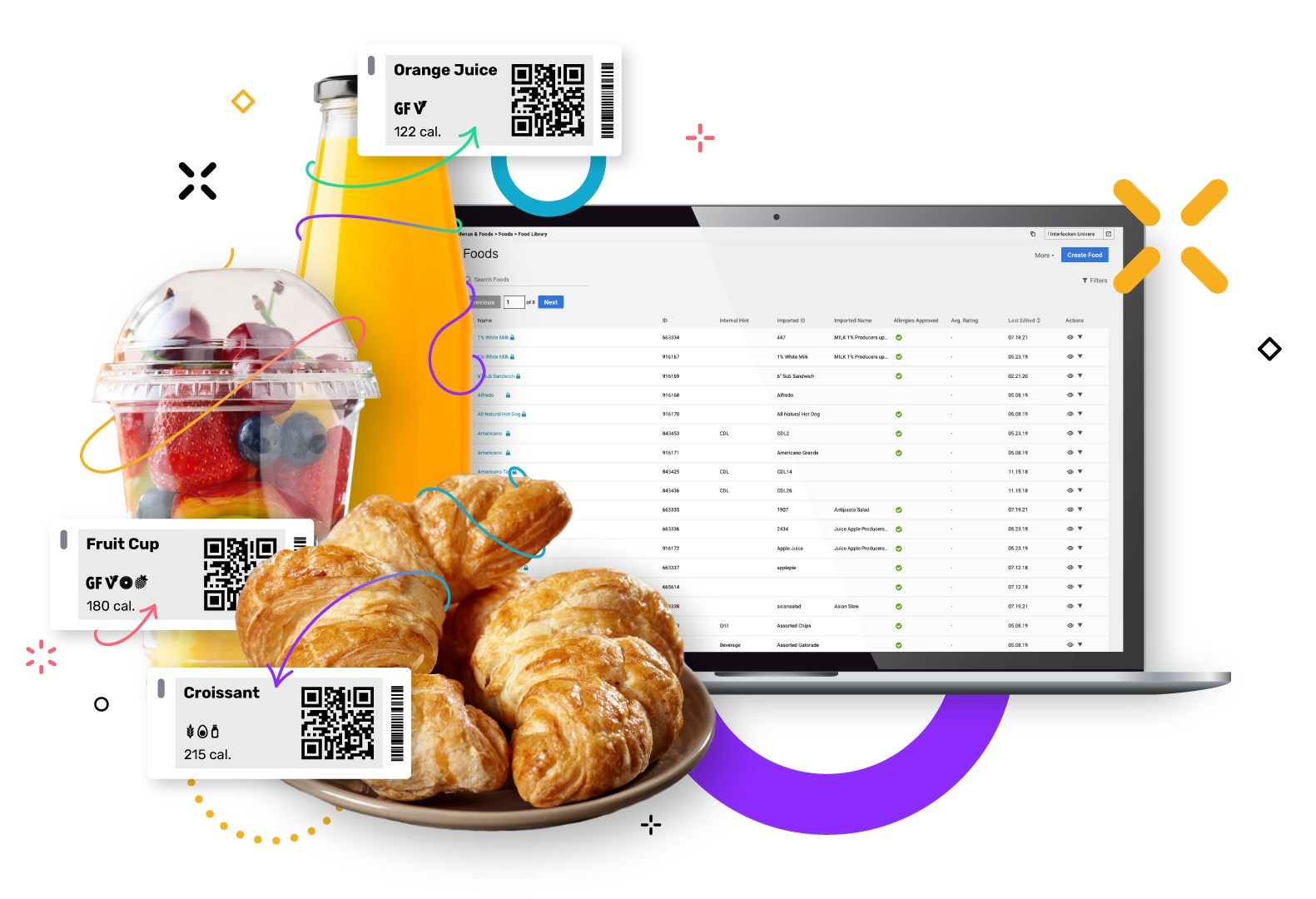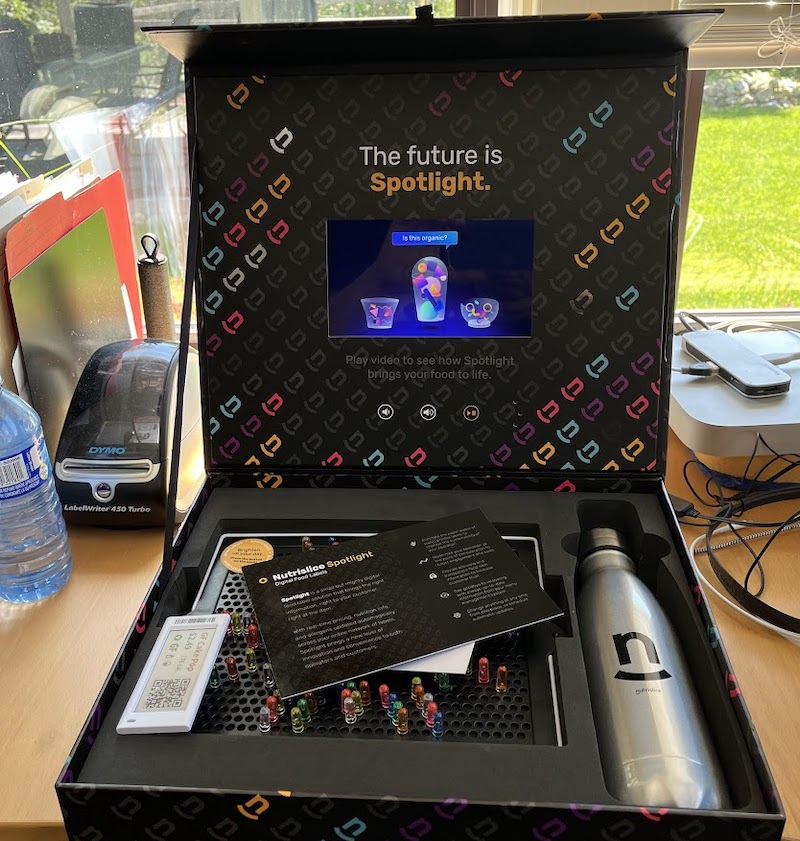
Nutrislice Expands Messaging To Include Digital Food ESLs In Non-Commercial Dining Venues
July 18, 2022 by Dave Haynes
Denver-based Nutrislice continues to broaden its offer well beyond its school menu and nutrition display roots, with the latest option in its food services technologies a spin on e-paper electronic shelf labels (ESLs) aimed at relaying important food item information at serving lines and food stations, on shelf displays, and even in coolers.
Called Spotlight, it’s a platform developed to automate and wirelessly update information running on little battery-powered ESL-style units. The footprint of lunchrooms is small enough to enable updating via Bluetooth, which we all kind of know from personal devices has a finite range. The platform has a library of templates to display prices, calories, allergen icons, QR codes, and more.
The software is integrated with a range of the most-used menu management systems out there – making it possible to import data or use APIs to make updating dynamic.
“Our new digital food labels are a lifesaver to overworked dining teams who are often fighting the challenges of an outdated paper labeling solution. Spotlight modernizes the guest experience while simplifying how operators manage labels — all while being kinder to the planet,” says Brian Crapo, CEO of Nutrislice.
Spotlight is a more sustainable option than traditional static labels, as it eliminates the resources and waste that come with paper food labels that often have to be reprinted when prices or recipes change. Operators can sync their existing food data with wireless Spotlight labels, update all their labels remotely at any time, and schedule automated item rotations via the Nutrislice platform, creating a truly time-saving and eco-friendly solution for operators who want a foolproof way to show accurate food information.
Foodservice teams are often using paper labels next to items to inform customers of details like price and allergen information. Spotlight’s durable, cold-and-heat tolerant digital labels can be placed on shelves, on serving lines, in coolers, or at stations for at-a-glance information that boosts customer trust and engagement in the operation’s products and services. Battery life is measured in years, not months or even hours. And Spotlight also reduces purchasing friction while increasing revenue by giving customers clear visibility into their food choices so they can make easier buying decisions.
“The reality is that some foodservice operations have a full-time employee whose sole job is to update the price on labels, sometimes several times a week to keep up with fluctuations in their costs,” says Mike Craig, Chief Customer Officer of Nutrislice. “Spotlight removes this tedium and frees up more time for operators to do what they do best: serve their guests and make delicious food.”
The company is in more than 23,000 locations worldwide – with the focus on non-commercial food services (like K-12 school cafeterias). The company also targets senior living, healthcare and corporate foodservices scenarios. Nutrislice also has technology for digital menus, ordering and signage. The ESLs are made by a Chinese firm, Zkong.

Craig, one of the company’s co-founders, sent me a product promo kit that somehow got to Canada without a pile of duty fees. The size of one of those boxes your grandmother keeps her silverware in, there’s an LCD in the lid that runs off a battery and fires up this video when the box is opened. Quite clever, and it included one of the little ESLs.
I don’t know anything, really, about school food services, but I am guessing the ROI model on this is pretty easily argued and understood. Anything that reduces time and effort is likely welcomed if the costs are not too high. A cafeteria would need just a fraction of the ESL units that a grocery, for example, would need. There’s a central platform and a base station, but I can’t imagine the hardware costs for this would be all that substantial.



Leave a comment